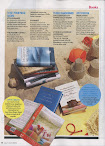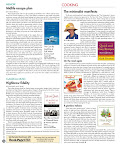
“Many people have written books about chucking their stressful careers and moving aboard a boat. Most of these are amateurish travelogues that fail to inspire or touch the reader. Not so Mary South's THE CURE FOR ANYTHING IS SALT WATER (a quote from Isak Dinesen). This is an honest, open, wonderfully written story of personal discovery, in which the author embraces a relationship with boats and the sea, using her new perspective to reexamine relationships with friends and lovers, past and present.”
This month, 69-year-old Japanese sailor Ken-ichi Horie will attempt to captain the world’s most advanced wave-powered boat 4,350 miles from Hawaii to Japan. If all goes as planned, he’ll set the first Guinness world record for the longest distance traveled by a wave-powered boat and, along the way, show off the greenest nautical propulsion system since the sail.
Horie’s latest adventure builds on a storied career of eco-sailing. In 1993 he pedaled a boat 4,660 miles, from Hawaii to Okinawa, setting a world record for the longest distance traveled by a pedal-powered boat.
In 1996 he set the world record for the fastest crossing of the Pacific Ocean in a solar-powered boat. And in 1999, he made a solo trip across the Pacific in a catamaran made from recycled beer barrels.
With a maximum speed of five knots, the Suntory will take two to three months to complete a voyage that diesel-powered craft accomplish in just one. But speed is not the point. The voyage aims to prove that wave propulsion can work under real-world conditions, opening up the technology for commercial applications such as cargo shipping. “Oil is a limited power source,” Horie says, “but there is no limit to waves.”
How to Ride Waves Across the Pacific
Electricity A set of eight solar panels produces 560 watts to run the navigation lights, ham radio, satellite phone and PC.
Propulsion Dual fins set in a side-by-side configuration beneath the bow convert wave energy into a dolphin-like kick that can propel the three-ton boat at five knots.
Stability The fins absorb energy from the rocking of the boat to help make the propulsion more efficient.
Hull The outer hull, only three millimeters thick, is made of a durable recycled-aluminum alloy.
Outboard Motor Reserved for extreme emergencies.
http://www.popsci.com/gear-gadgets/article/2008-02/wave-runner










